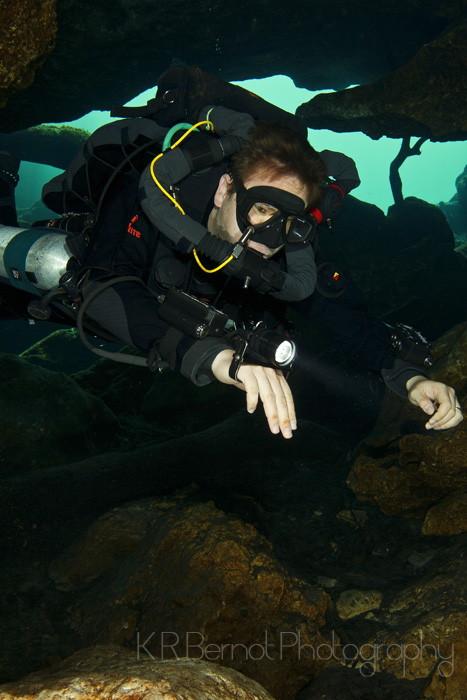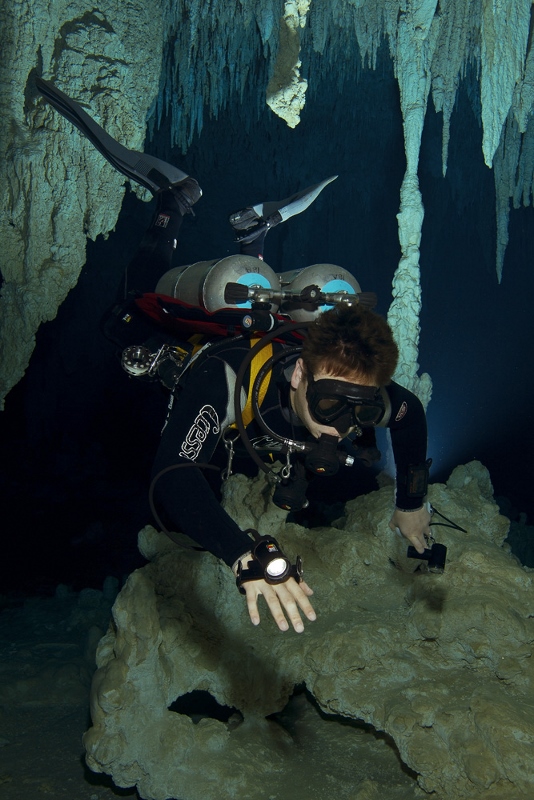Back in August of 2013 our community lost one of our own due to a simple mistake. Carlos Fonseca took a bottle to Ginnie which was permanently marked for oxygen; he swore it was filled with air. Unfortunately, it was not. A simple error cost him everything, it was a moment I will never forget because it really drove home for me how important this simple procedure is. He was the first diver I had come to know personally in this community who perished doing something I love. It was a lesson I have not forgotten, analyzing a cylinder for gas content and marking it properly saves lives. Sadly, it seems many have not learned from his mistake or have conveniently forgotten. Sadly, I still hear the same trite remark I’ve heard entirely too many times. ‘Oh you guys bank 32% right? Great, I trust you.’ Really?! You trust me? I’m sorry to announce, I’m simply a human, and humans can and do make errors. Even simple errors in diving can cost you everything. Why is a less than one minute process not worth your life? Why are we failing to take the short bit of time to analyze and properly label our gas mixtures?
Labels for cylinders exist in many forms, at a minimum, a label with the percentage of oxygen and helium and the MOD should be in a spot on the cylinder clearly visible to all team members.
One thing I see often is distraction. When I’m going diving, I take setting my equipment up seriously. I don’t like distractions because distraction leads to something being forgotten or missed. In the past I have let distractions get to me and I have left fins, primary light, and other important pieces of gear at the house or shop forcing me to abort my dive and do the walk of shame back to my pickup. Now I set all of my gear up when I know I won’t be interrupted by something or someone, or at minimum do a second check of my gear to make sure everything is in place before I take it out to the dive site.
One busy day at the shop, I had a customer ask me to fill aluminum 40 with 50% oxygen. Using a 40 for 50% is not common in this area, generally we see people filling that sized cylinder with 100% oxygen. While I was filling, the customer ran into a friend in the shop and began chatting. Another customer came in and asked me to fill a very similar aluminum 40 with 100%. I finished the first cylinder and placed it in front of our shop analyzer. I informed the first customer where the tank was and that he was welcome to use the analyzer should he need it. I returned to filling the second cylinder. When I finished I put the cylinder out across from the first, far enough away that it shouldn’t have caused an issue. I had a third customer came in who needed nitrox fills, while I went out to fill the nitrox the first customer grabbed his bottle. At least, he assumed it was his bottle. What he actually grabbed was the very similar aluminum 40 with 100% belonging to customer number two. Had he taken the minute to analyze and properly mark the bottle, this whole thing would have been avoided. Thankfully, we were able to catch him before he made it out to the dive site and he and the second customer left with the correct bottle. This could have caused a real issue for diver number one using the 50%, as 100% oxygen becomes toxic below 20ffw.
Another problem I see is failure to properly label bottles. Just because you have personally analyzed your gas and know what’s in your bottle, does not mean you shouldn’t label your cylinders. Failure to mark your bottles can lead to improper gas switches which could be easily caught by you or your team member(s) with appropriate labeling. A simple procedure that takes mere seconds could save you from switching to the wrong gas at the wrong time or sharing the wrong gas with your team member should a need arise. Unfortunately mislabeling of cylinders is not a myth and cost Bobby McGuire his life. While performing a gas switch at 150’ he mistakenly switched to a 50% bottle. His bottles were labeled ‘1’ and ‘2’. Had he labeled these gases with the percentages and correct MOD’s he likely would be alive. (Read more about Bobby McGuire on my friend Ken Sallot’s blog: http://www.divegainesville.org/always-check-your-gas/) Labeling cylinders with numbers, color coding your cylinders or regulators, etc. seem like great ideas, but none of them are 100% effective ways to ensure you are breathing the right gas. The only proven method is analyzing, labeling the tank clearly with percentage, and MOD and having a team member verify that you are in fact switching to the proper gas. Don’t you owe it to yourself, and your friends and family to preform these simple tasks to ensure your own safety?
Every cylinder should get a proper marking. Yes that means every sidemount bottle, every backmount set, every stage, every decompression bottle, every time. No excuses!
A simple procedure that takes mere seconds could save you from switching to the wrong gas at the wrong time or sharing the wrong gas with your team member should a need arise
Ensuring you ask the fill station operator to fill the correct gas is imperative especially when your tanks are permanently marked for a gas mixture. We once had a customer near irate at a staff member for asking multiple times if they really wanted oxygen in a permanently marked diluent CCR cylinder. Finally the customer realized the cylinder was marked for diluent and promptly apologized that he had given the wrong instructions. Thankfully our staff knew to ask and fill the correct mix.
Every professional dive shop I’ve been to has a nitrox analyzer available for use and every professional shop I’ve been to has a helium analyzer as well if they are supplying trimix.
In short, analyzing and properly marking your cylinders takes only moments to do and can save your life. Every professional dive shop I’ve been to has a nitrox analyzer available for use and every professional shop I’ve been to has a helium analyzer as well if they are supplying trimix. We know it can keep you and your team safe, why would you skip a few seconds of proper procedure when the analyzers are readily available at the time of fill or pickup? Analyze, save a life, if could be your own.












